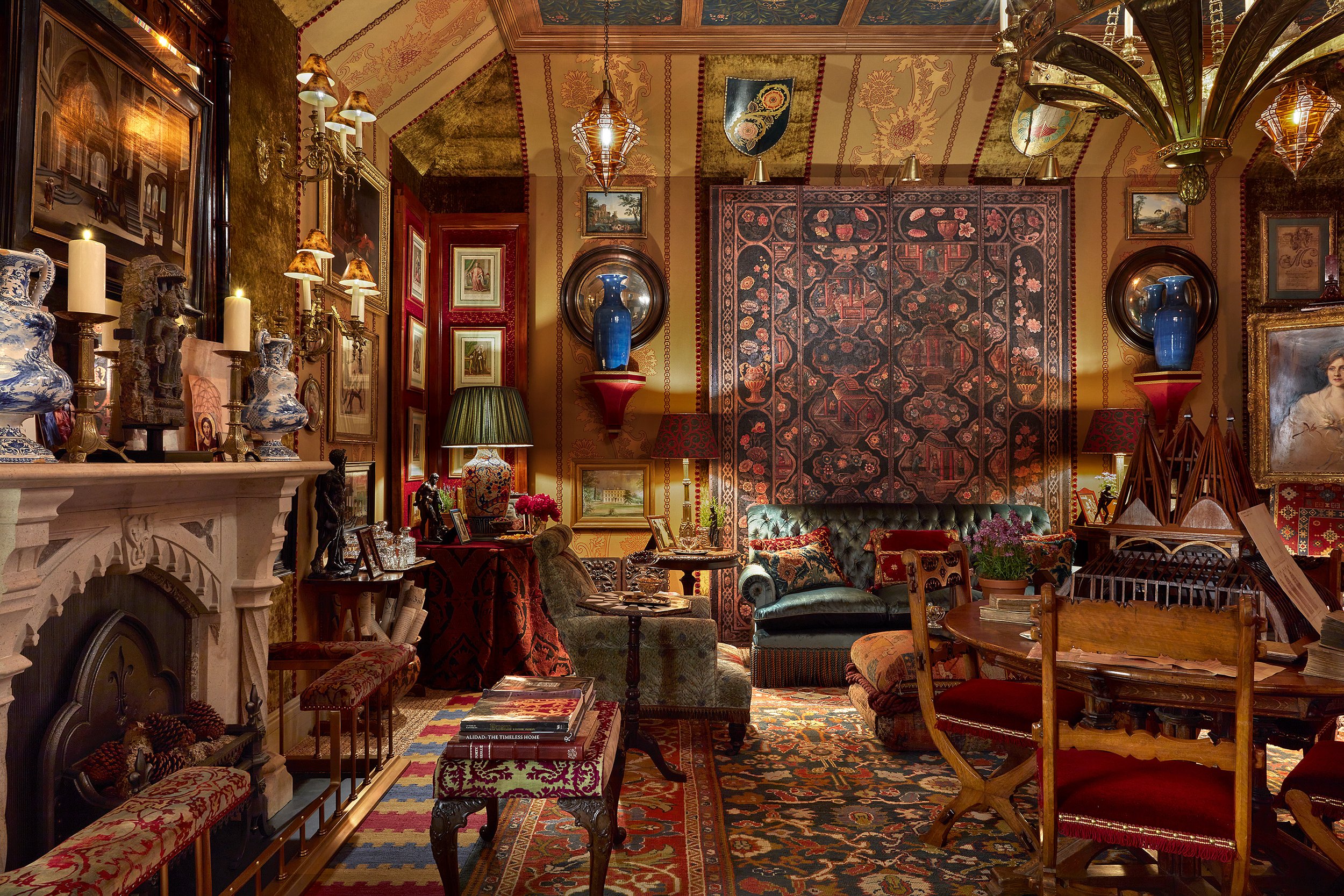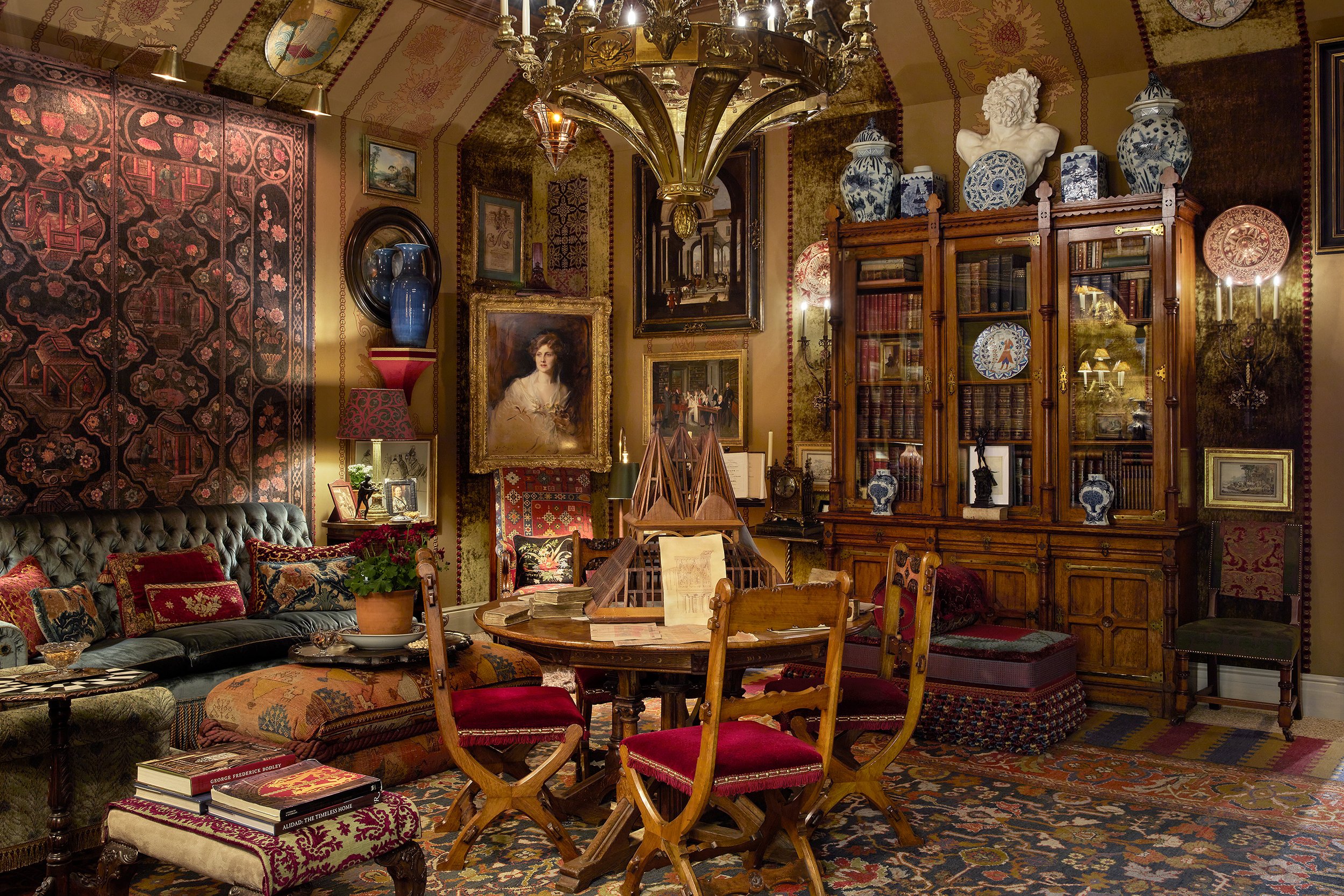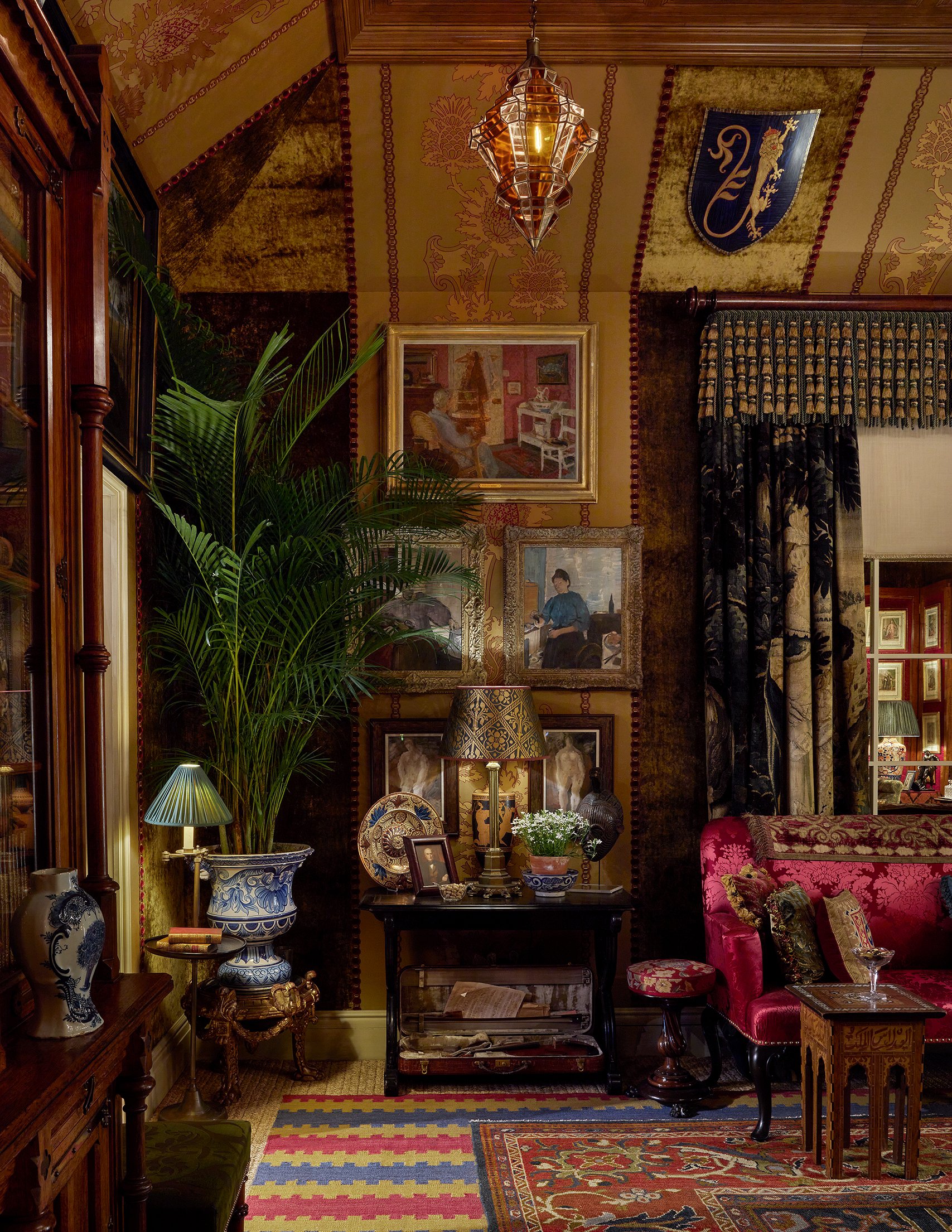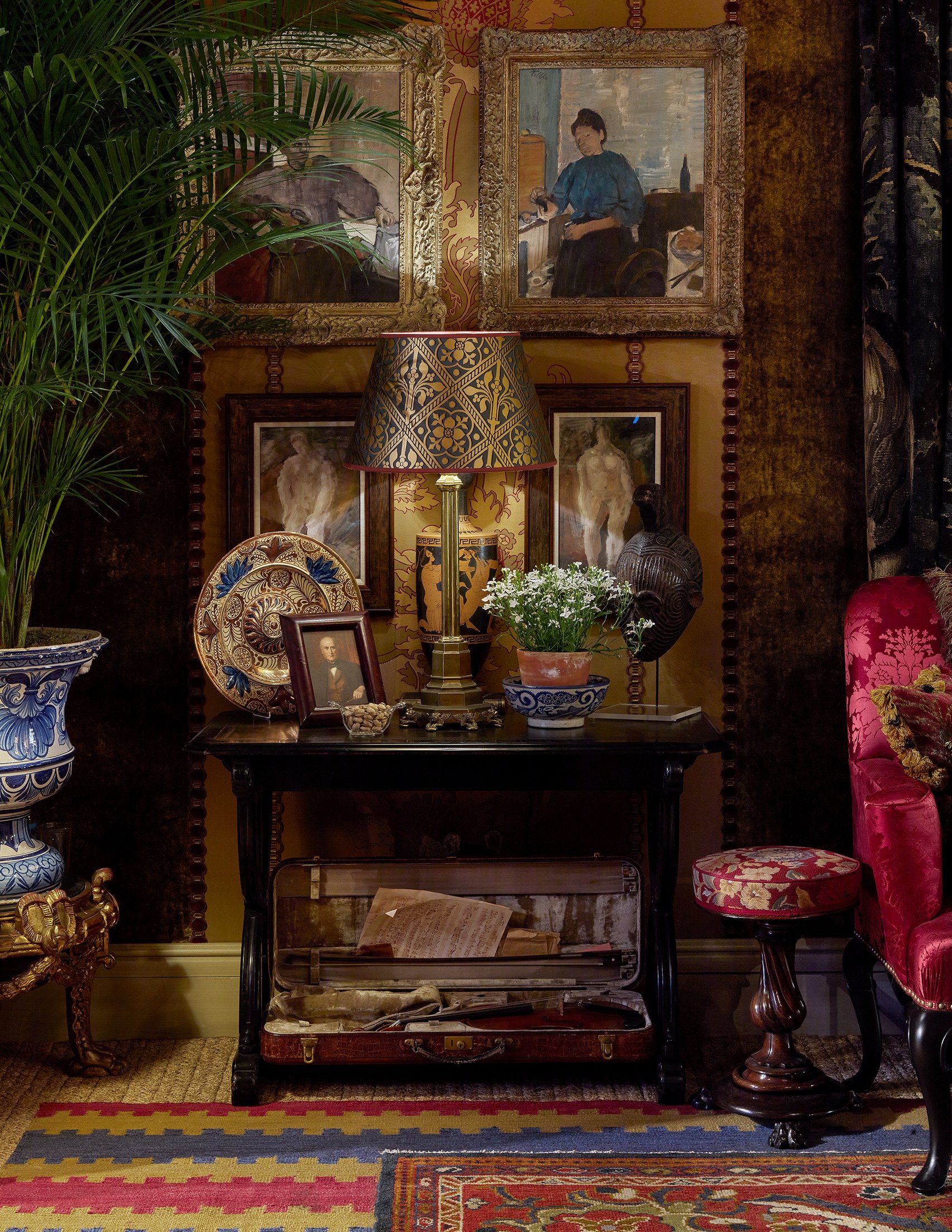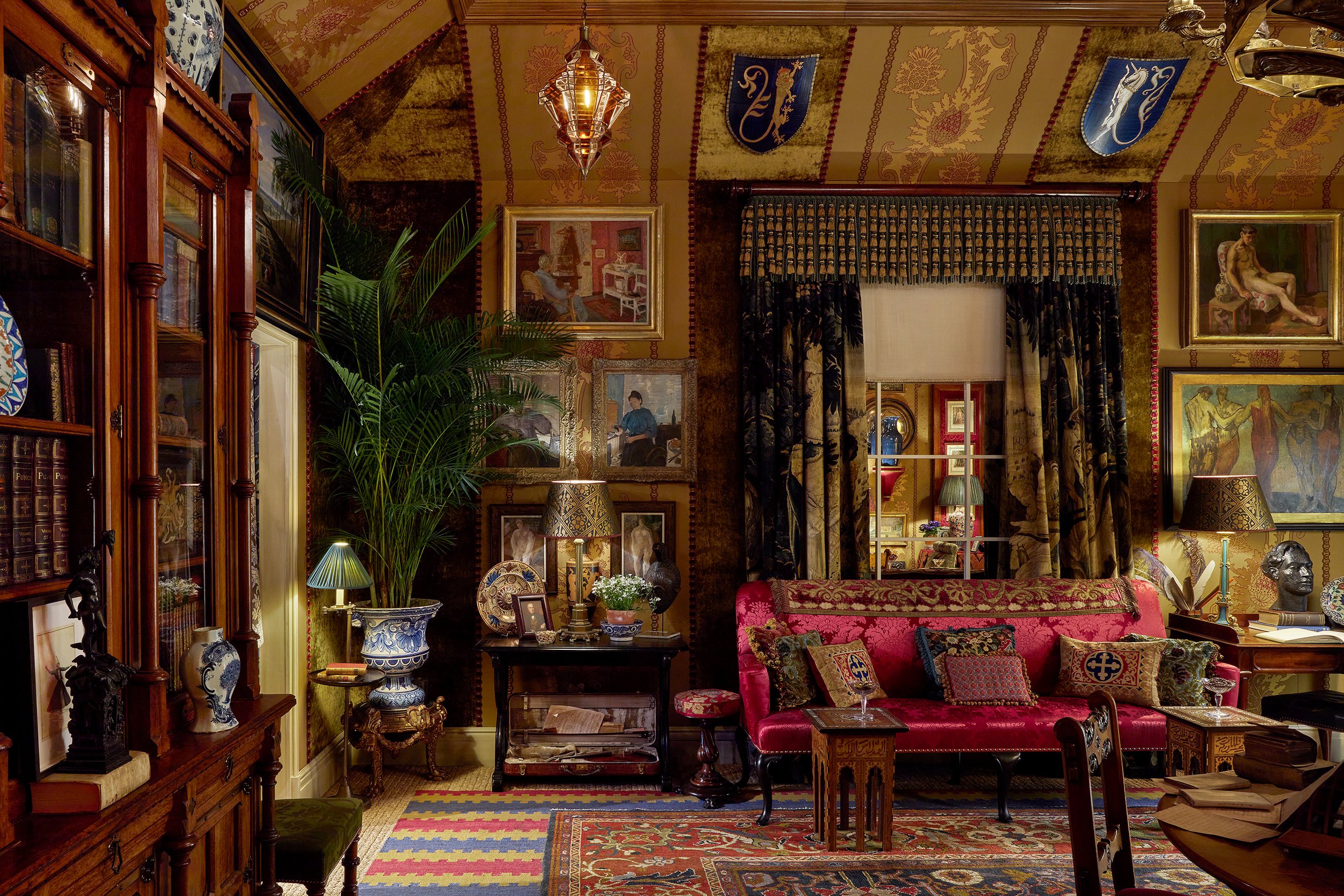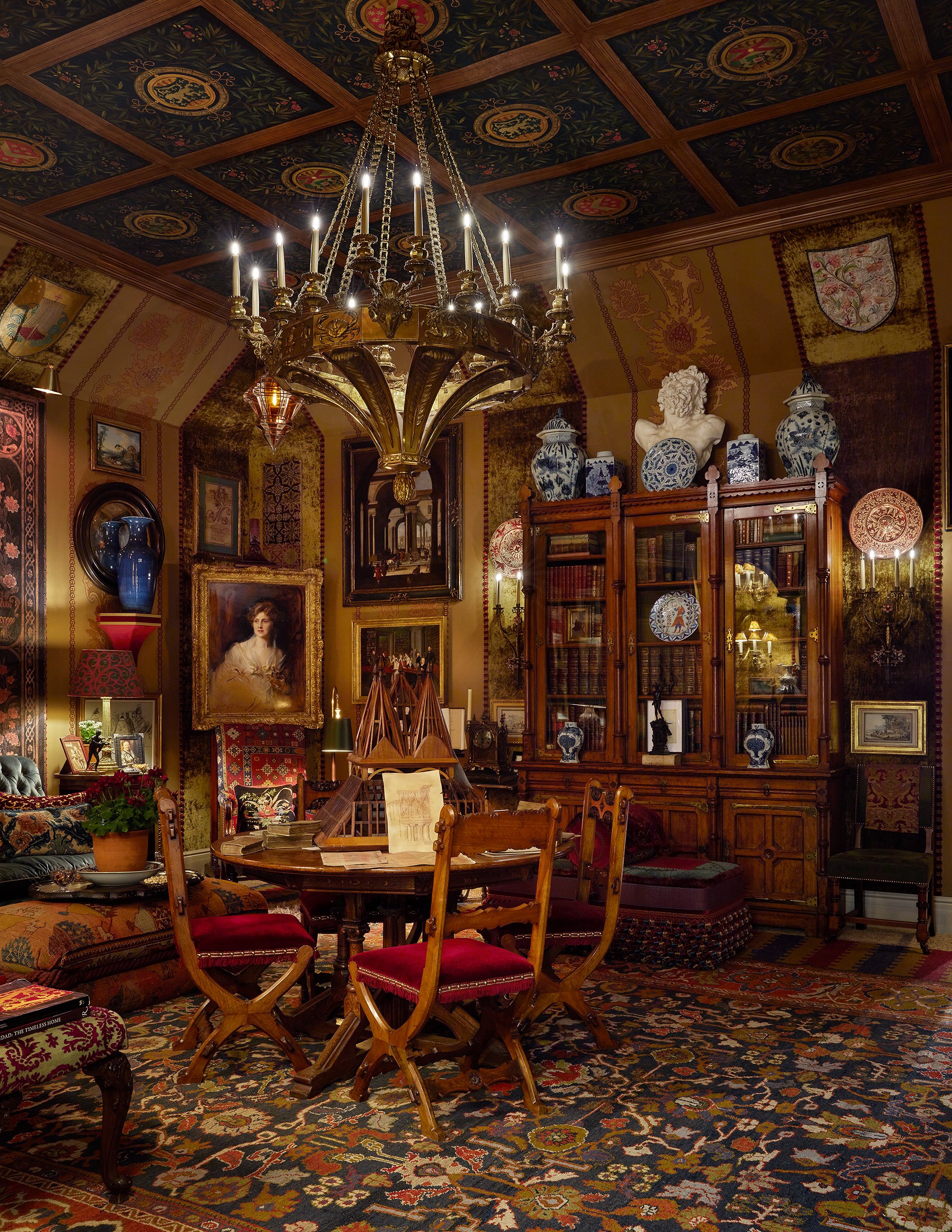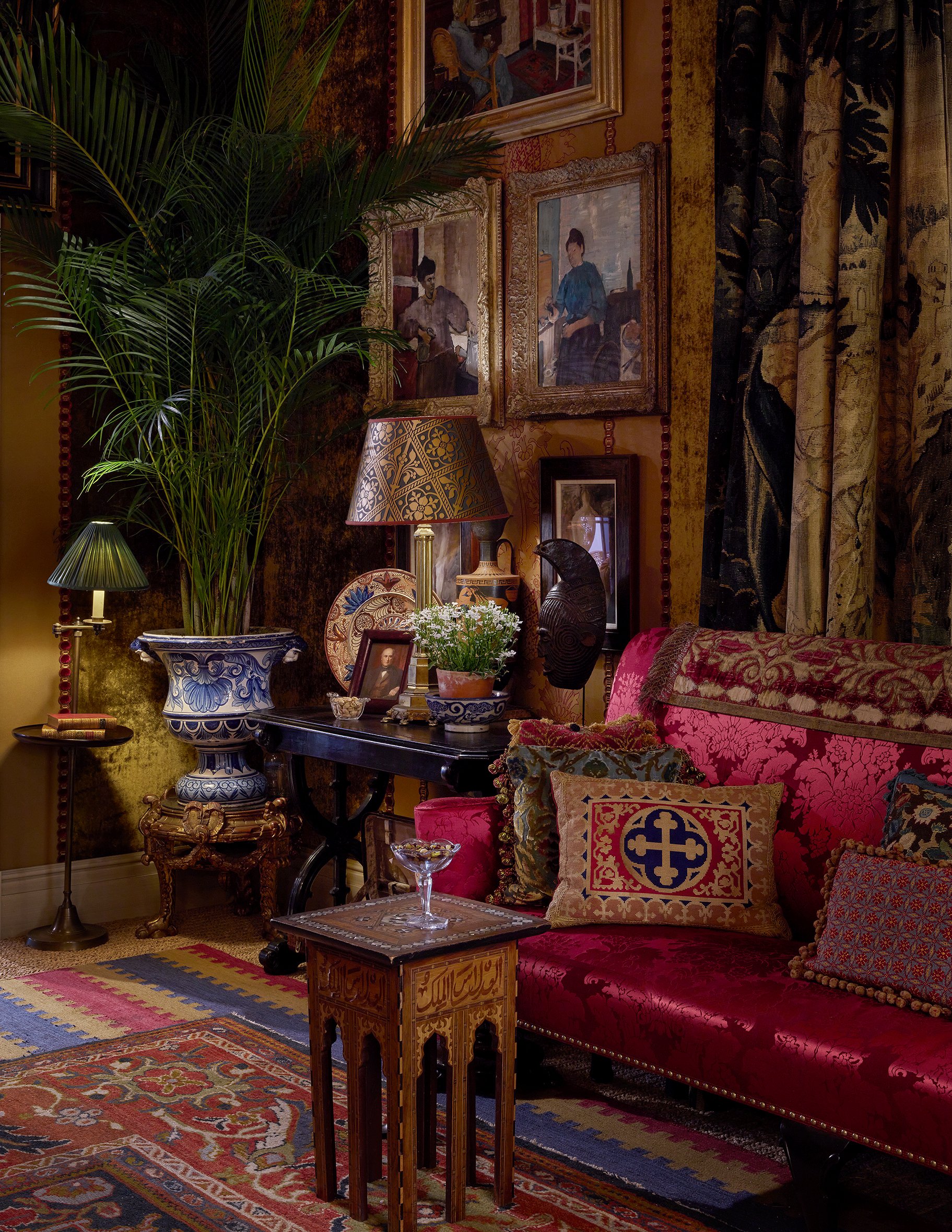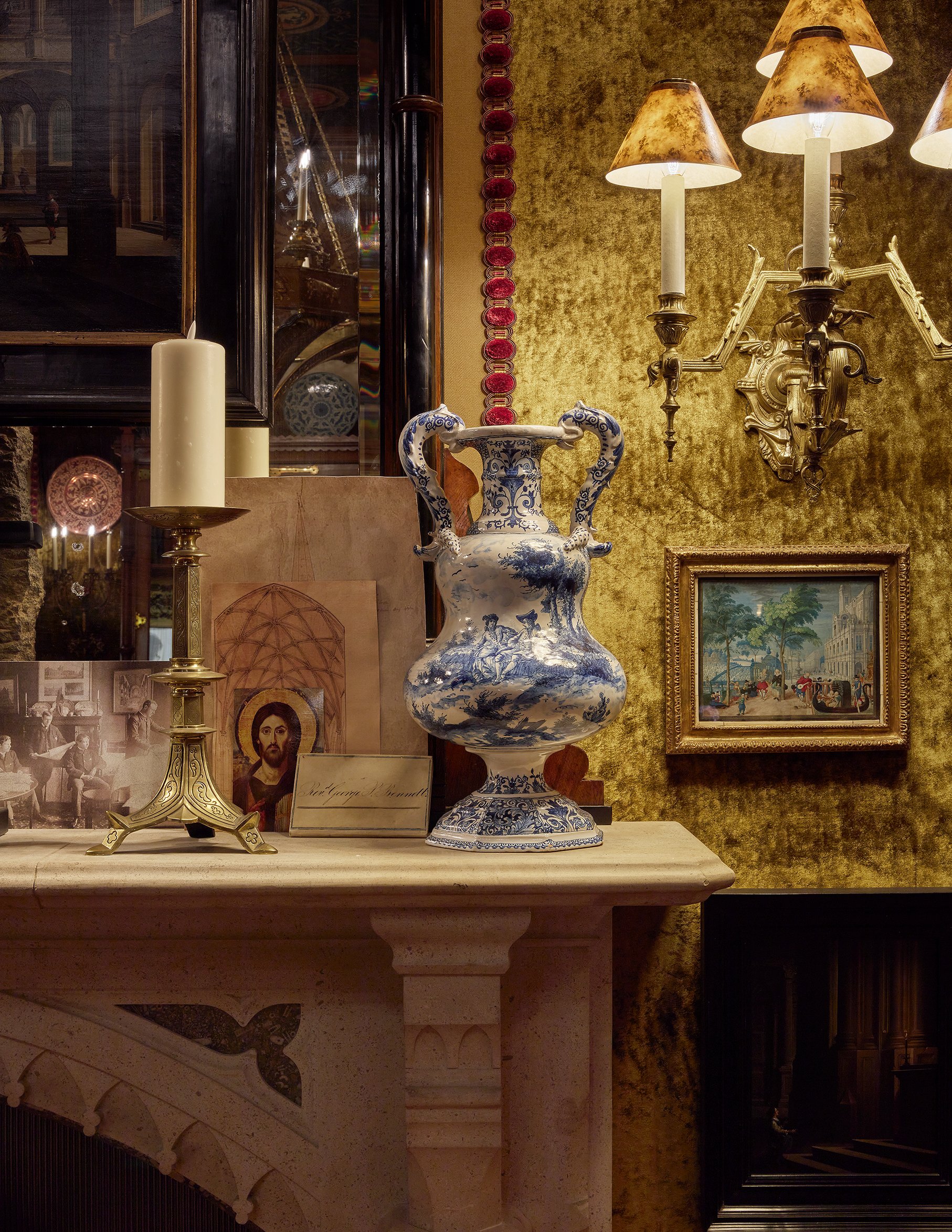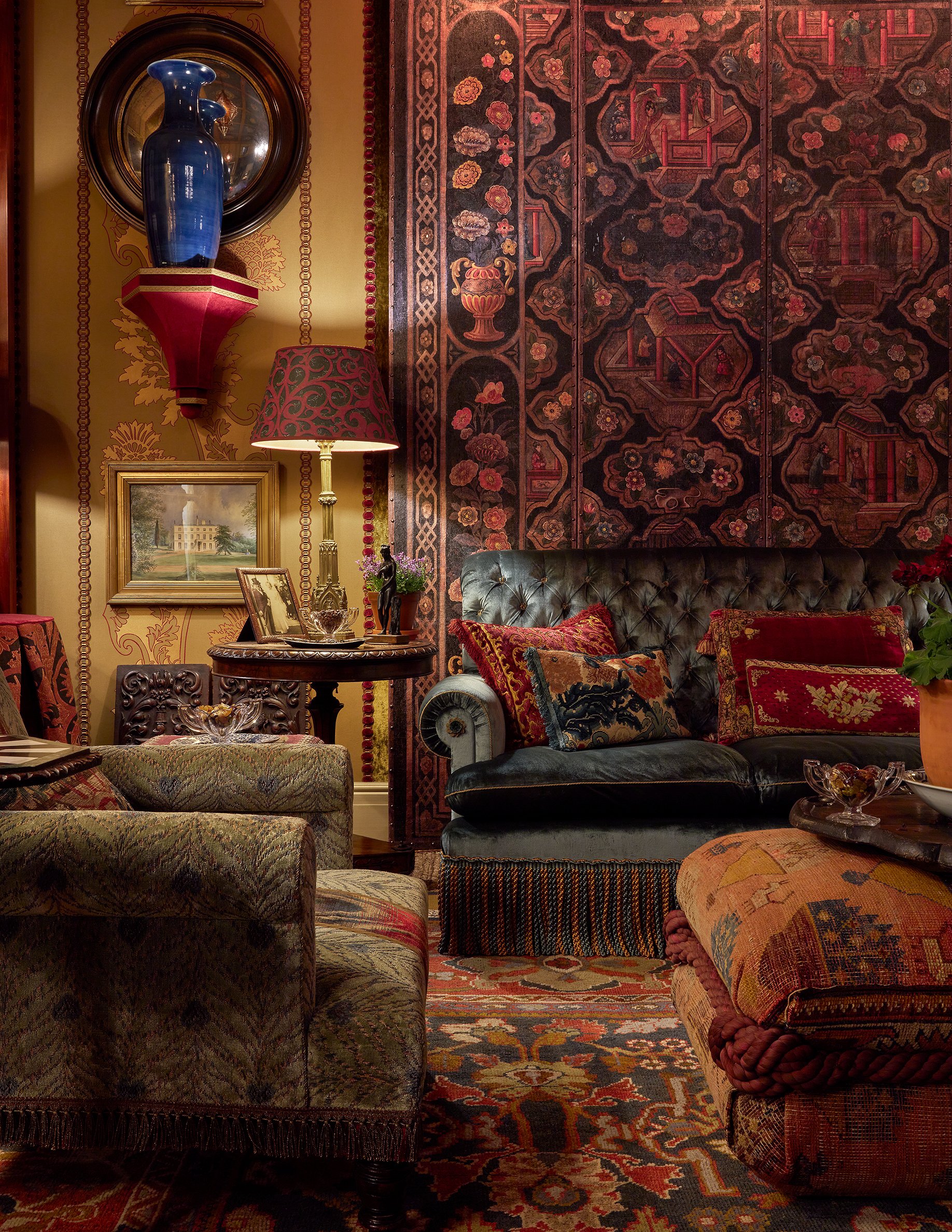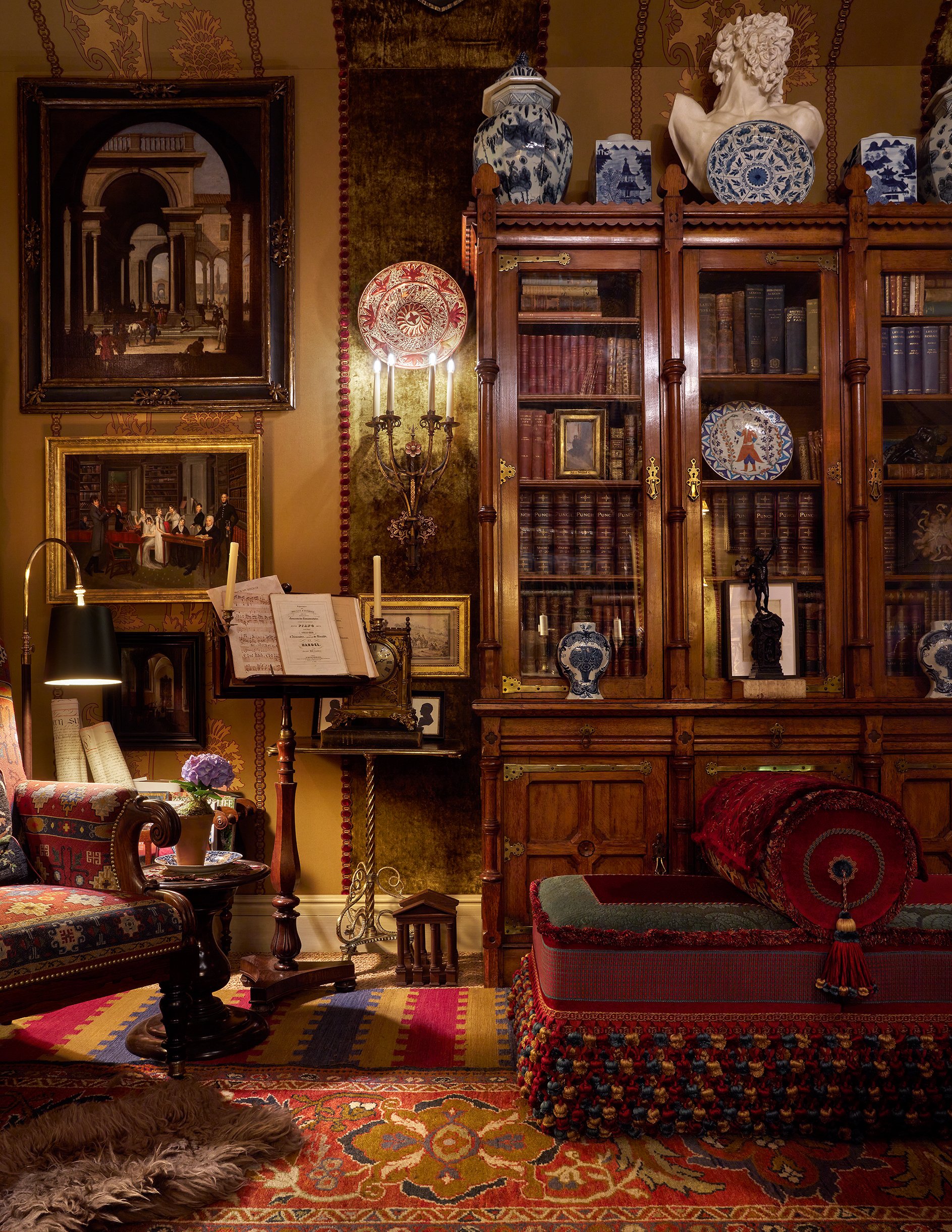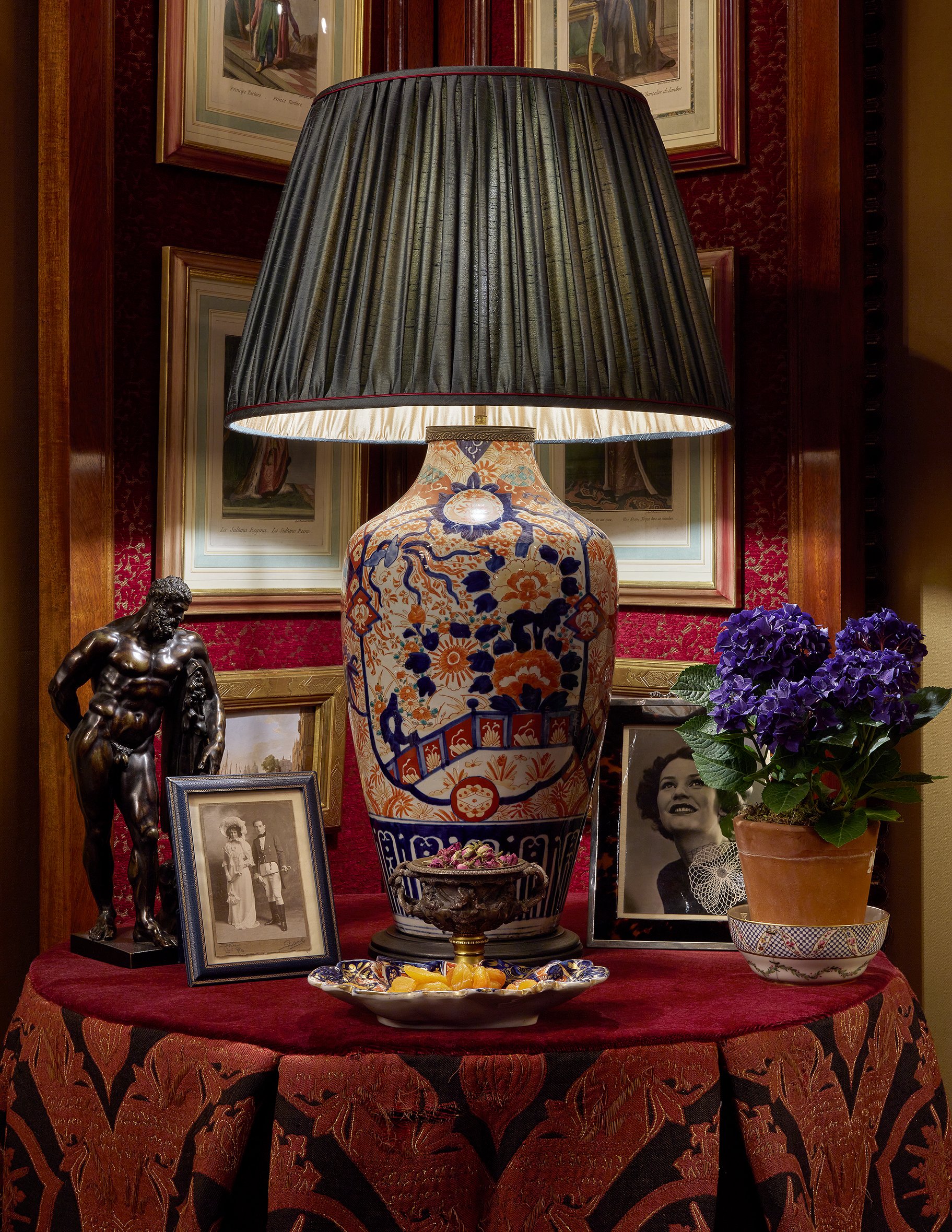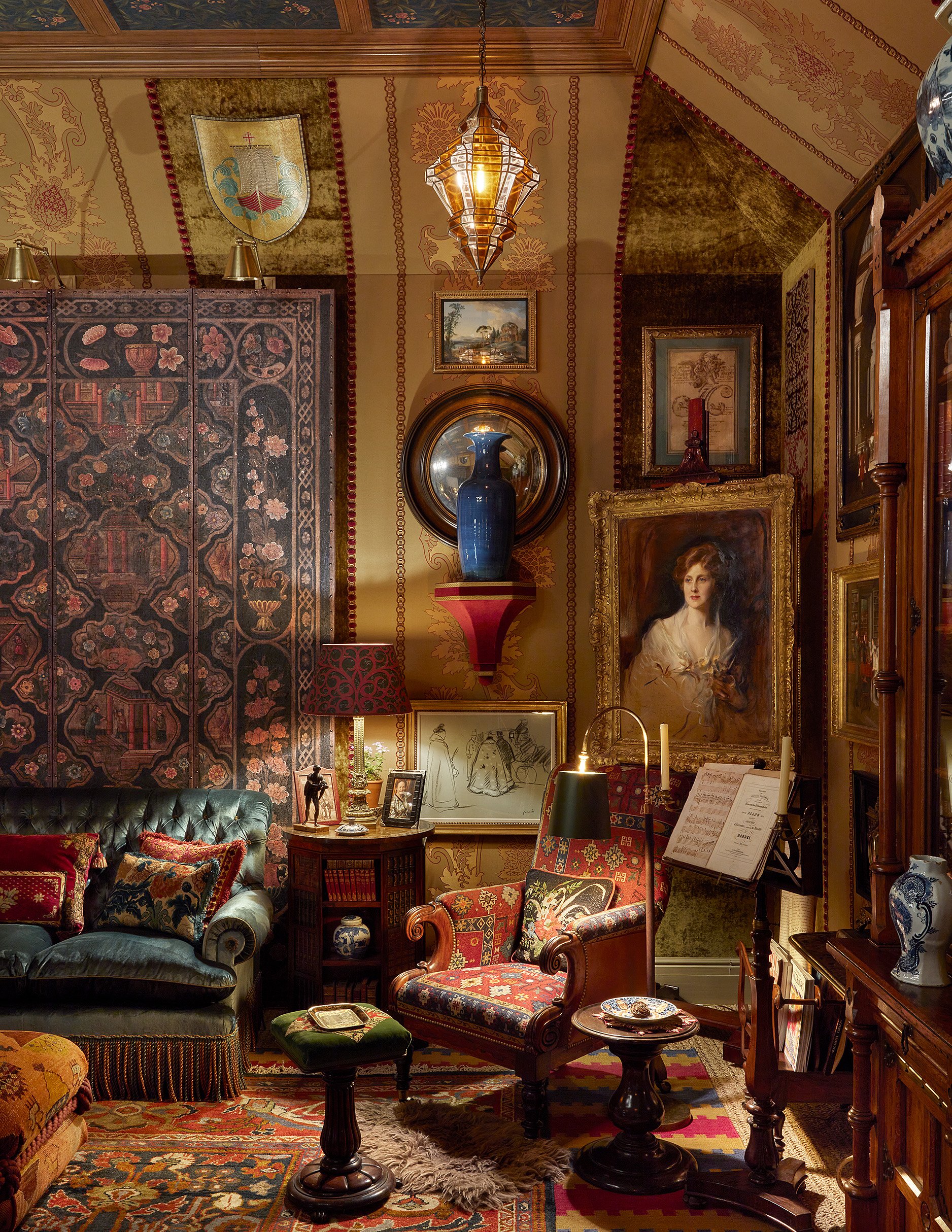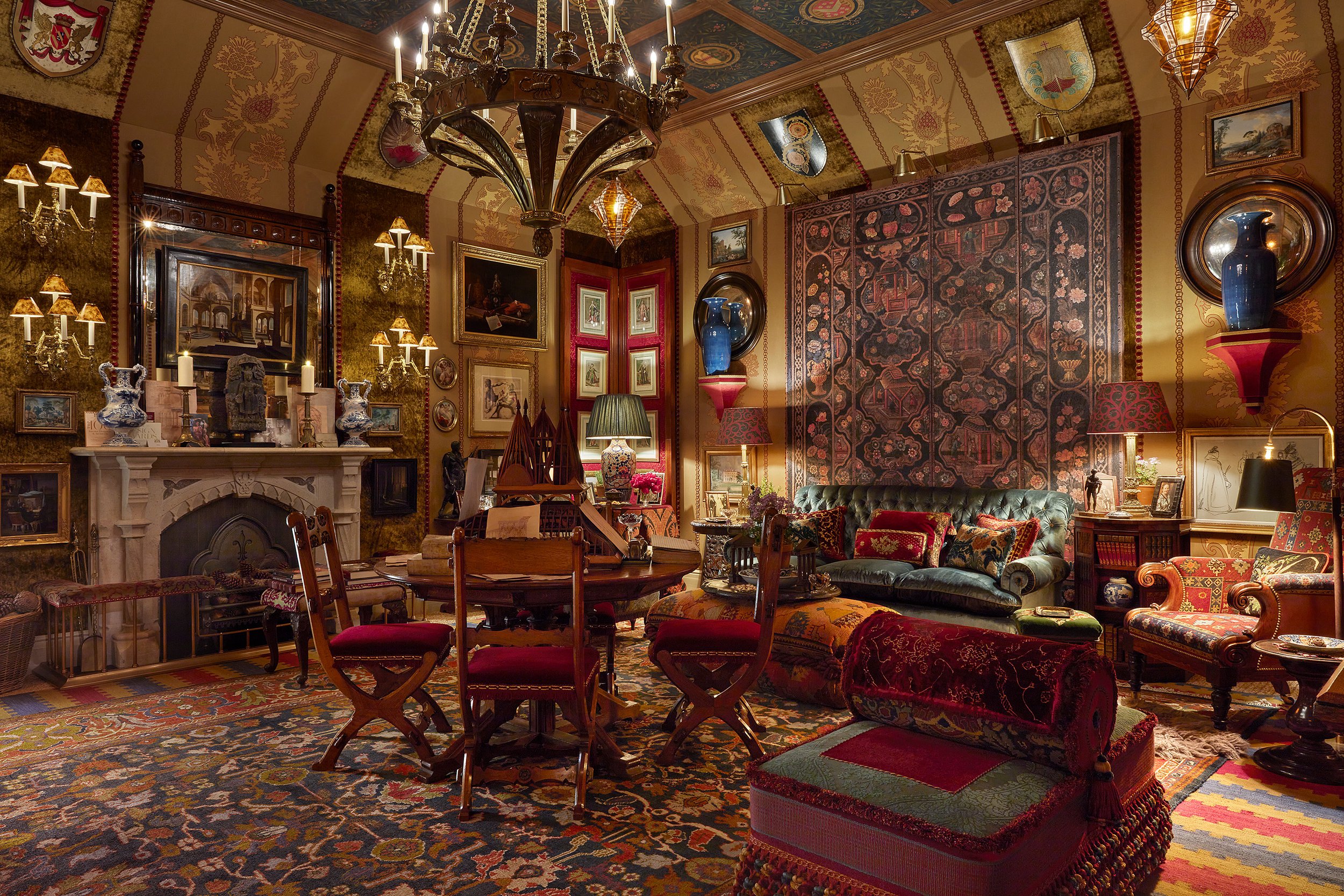THE LEGEND ROOM WITH WATTS 1874
WOW!HOUSE 2024
‘When I think of Watts I think of the church - it’s very gothic. Of course they do beautiful damasks and all sorts of things, but their essence started from the church. The moment that I started thinking about it I knew that it had to be something gothic that looks like it has been there since they started, 150 years ago. But then again it is a room that has evolved and other people have added things to it, but yet the essence is still there. Despite its age it still relates to the present, it’s live-able and is a real room as opposed to just a stage set. Another aspect of Watts that appealed to me was their architectural background. For me the architecture of the room is so important - it is as important as decoration. A lot of people think interior design is just about a few fabrics and what a couple of chairs look like, but it isn’t. If the architecture is not right behind the scenes, it never becomes timeless or never really looks good.’
‘The inspiration was a large scale, renaissance design that was redrawn by pioneering architect and Watts founder G.F. Bodley in 1889. The design includes stylized thistle flowers that lace upwards magnificently. I decided to use this for the walling as I wanted a big design that had movement in it and to appear to be growing up to the ceiling. It was initially very monochrome, and then we added a bit of colour to it as it wouldn’t be an Alidad and Watts room without some colour. I then started developing the furniture layout, which is really always one of the first things that I do. When I was told that the ceiling was to be 3.05 meters high, I was not going to have it. I would not be able to do any justice to that particular fabric, or the Watts style. After a bit of back and forth, we managed to increase the ceiling height substantially so that I could actually manage to do something that properly celebrates what Watts represent. It is a room that can take that gutsy, very strong aesthetic that both they and I are well known for.’
‘When I walk into a Watts showroom, I feel that I could use any of their fabrics – the place is timeless. Which is really a huge thing because their fabrics are incredibly varied. They are based on documents which have been copied and interpreted correctly, as opposed to a lot of fabrics that you see which are based on 17th and 18th century designs and the colours are absolutely the worst. The scales have been reduced, making them a completely different fabric. Watts understand old fabrics, they understand scale and they are not afraid of reproducing them. They are bold enough to keep going, without changing their style. They are still here and they’re still family owned - that really appeals to me. They will not discontinue a fabric when it doesn’t sell one season, despite it being absolutely beautiful.
One of the recent things that they have done is reproduce tapestries, transcribing centuries-old designs into exquisite, digitally printed textiles. I am obsessed by tapestries and very, very, VERY picky. But, they have done a great job. In the Legend room I have used Watts Ariene tapestry from their Tableaux Scéniques collection as curtains, and if I had used a huge 17th century tapestry in the room, they could have gone very well together – that’s an enormous compliment!’
‘I took inspiration from Watt’s heritage, picturing a room that one of MS’s ancestor’s might have lived in. I imagined a multipurpose space that he would use to research whilst seated at the central table, with his books and architectural model, and also for comfortably entertaining his guests. Everything happens in this room. He is a traditional Englishman, who’s family have been living there a long time and he has added his own touches to it. It is filled with the interesting and diverse items that has collected over the years. I can imagine him on the blue sofa – putting his head on the arm and his feet up, with his slippers on, going to sleep. Not only is it a space to entertain in, it is also a space of solitude.’
Gallery
As featured in the press…
Room photography by James McDonald and Milo Brown





